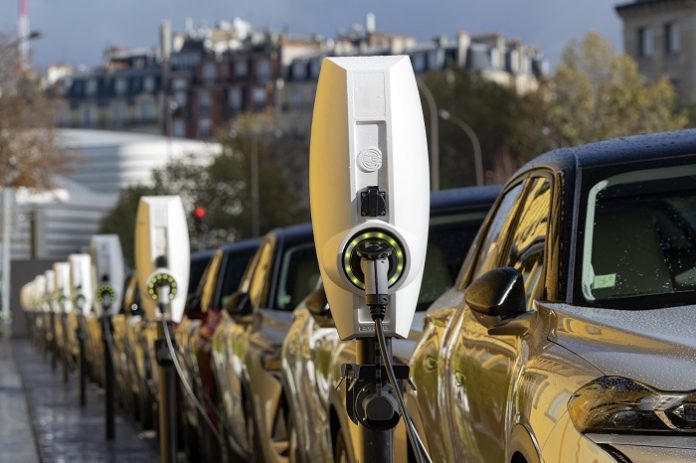Electric vehicles (EVs) are looking to be a huge part of our future. As the costs of climate change and the price of oil both become too high to bear, auto manufacturers will shift more of their vehicle fleets to electric. And as electric-vehicle technology advances, it may simply become better than traditional combustion.
Shifting to EVs poses a unique problem for the grid: a sudden, massive increase in demand that will be unpredictable and piecemeal. EV fleets could play a part in overloading the grid, or could wind up unable to charge. This is where Open Automated Demand Response (OpenADR) comes in.
What Is OpenADR?
The OpenADR Alliance defines OpenADR as a system “to automate and simplify DR and DER for the power industry with dynamic price and reliability signals that allow end users to modify their usage patterns to save money and optimize energy efficiency, while enhancing the effectiveness of power delivery across the Smart Grid.” While this definition is rather opaque, we intend to break it down. The first step is to define demand response (DR) and distributed energy resources (DER).
DR and DER
DR, also referred to as “Auto-DR,” technology enables businesses to reduce energy use automatically during “demand response” events. This could include automatically turning off lights once everyone has gone home, or precooling a work area so it’s not hit with a sudden demand for energy. Often, these systems can be customized for an individual consumer’s preferences. In the case of EV fleets, this would include automatically changing the times vehicles are charged, so that they get their batteries filled during low-demand hours. This saves the fleet owner money, and saves the power grid some stress.
DER on the other hand, are small and structural power generation sources that are located close to where the electricity is used. They provide alternatives or enhancements to a regular power grid (which, as mentioned, is underqualified for the current load, let alone future loads). In general, DER is faster and less expensive than traditional power plants and high-voltage lines.
OpenADR in Action
So with this established, it becomes much easier to piece together what OpenADR does. You can think of OpenADR like a sort of global translator between end users (drivers and vehicle manufacturers), charging stations and the systems that provide power. Normally these systems can’t communicate with each other in any usable way for most users. With OpenADR, not only does that change, the translation also serves to make power delivery more efficient and effective.
Especially in conjunction with Open Charge Point Protocol (OCPP), it can help save the power grid and ensure that an EV fleet remains responsive and adaptable, without the need for human intervention. OpenADR can even turn fleet into an asset.
Benefits of OpenADR
The benefits of OpenADR are myriad. We’ve already covered some of the ways it helps the grid, by making it more responsive and adaptable. It also makes DR more reliable, reducing the need for big, expensive power networks, and makes it easier for states to reach reduction targets.
On the side of users (including EV fleets), it makes systems less opaque and easier to interact with, provides a way to prevent being held hostage by proprietary systems and allows users to control costs and maximize value by customizing their energy usage. It even allows them to take advantage of peak-demand reduction benefits.
OpenADR and EV Fleets
The flexibility and intuitive interface of OpenADR keep EV fleets from causing problems for an overloaded power grid. Looking ahead, there’s also a likelihood that power-grid problems will result in an increase in peak-demand pricing. For EV fleets, that means that being responsive and adaptable could allow drivers and fleet owners to ensure that they save money by avoiding peak demand times.
But that’s not all. The Open Charge Alliance notes that by combining OpenADR and OCPP, EV fleets can do more than take advantage of and adapt to power-grid issues — they can become an active asset. They do this almost by serving as batteries. Rather than draining the grid, EV fleets could be hooked up during peak demand times to strengthen the grid and provide power. It’s possible there could be financial incentives for this, in the same way that some solar-power generation can counter your electric bill.
This would not be possible without the translation that OpenADR (and OCPP) provides between EVs and power sources.
From Threat to Solution
EV fleets do pose a threat to the already strained U.S. power grid. But, with OpenADR, that threat can turn into a boon, making the grid more responsive and adaptable and allowing vehicles to serve as batteries. This could even provide financial benefits for EV owners. It’s important to note, however, that it will be difficult to take full advantage of this strength if your fleet lacks an Open Charge Point Protocol (OCPP) system, as those are a crucial part in ensuring your vehicle’s software can effectively communicate with the myriad other devices that make up this network.
OpenADR is a forward-looking solution to a problem that has more than proven its value.









